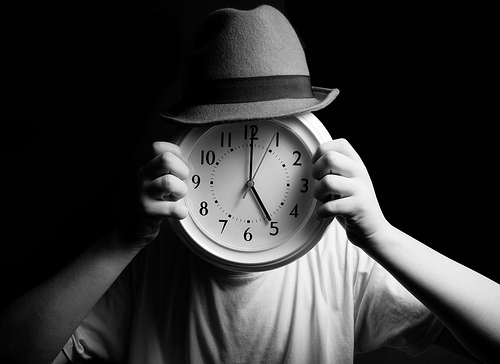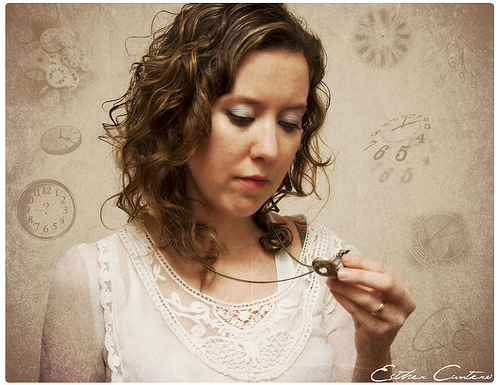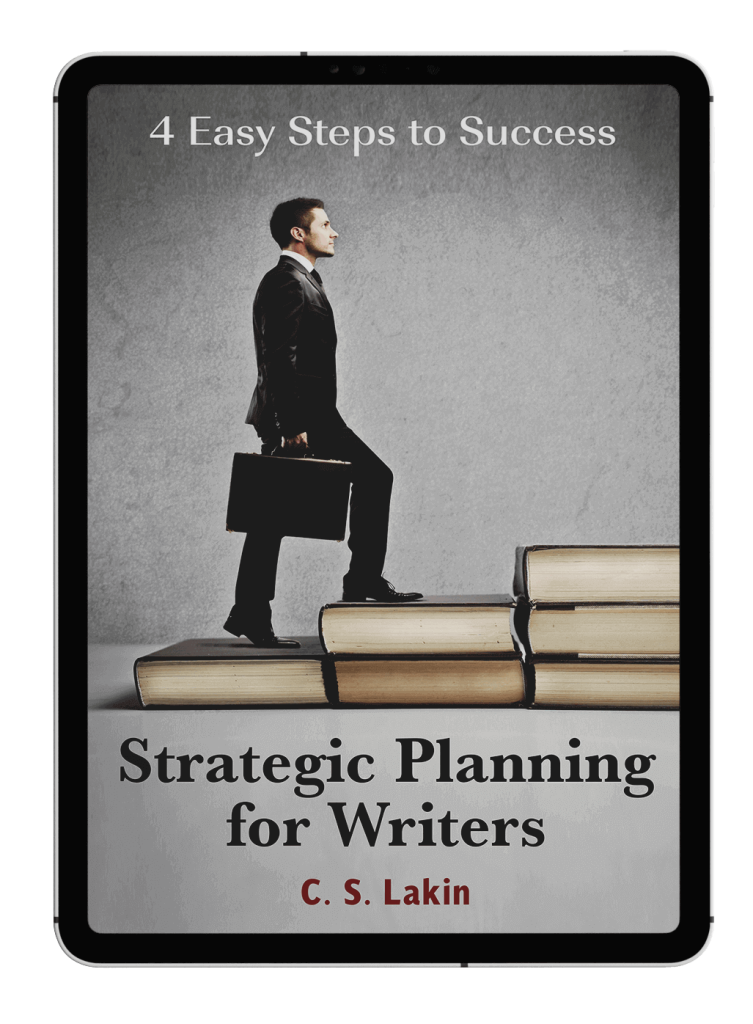How Fiction Writers Can Manipulate Time
Time is a fluid thing in our lives. It’s all about perception. That’s why it’s “timey-wimey,” as Dr. Who likes to say.
Ah, time. That nebulous, illusory, slippery thing. Just what is time, anyway? As long as there has been time, there have been philosophers pondering this question. And every answer seems to be dry and scientific so as to mean almost nothing.
Yet, time frames our lives—and the lives of our characters in story. So, as writers, and maybe also as humans, it behooves us to spend a moment of time (or two or ten) pondering this stuff of our existence to get a feel for it. For, how can we writers convey time unless we understand it and how it works—at least to some extent? Is that even possible?
Sean Carroll, a physicist at Cal Tech, in an attempt to explain time, says, “The way it works is that the perception comes first and then the understanding comes later. So the understanding doesn’t change the perception, it just helps you put that perception into a wider context. . . . I think we all perceive the passage of time in very similar ways. But then trying to understand it doesn’t change our perceptions.”
Interesting the way Carroll says we have the perception first, and then the understanding follows. And all that understanding does is help put that perception into context.
We may “go through time,” or time might walk alongside us. Regardless of all the scientific definitions and theories about time, it comes down to perception. Almost everyone wonders why time seems to ramp up speed with every passing year we grow older. Time is all subject to perception and circumstances.
Since writers are encouraged to “show, don’t tell,” in order to portray a sense of time passing for our characters, we need to stop and take a look at how we personally perceive and experience time. By paying attention to that, we can create scenes in which our characters also experience time in different ways.
Why Should We Manipulate Time?
One obvious reason for learning how to expertly “manipulate” time for our characters is we want our scenes to be believable and to portray characters experiencing time in a believable way.
Another reason, though, for manipulating time in our scenes is to create tension. When time flows normally around us (using this way of describing time seems the most understandable), we don’t really notice it. We’re in status quo. We humans hardly notice the world around us unless something is off, different, unexpected. That’s how our brains work.
So we’re not going to notice time passing unless it’s off. And not necessarily in a huge way.
We’re not going to notice time passing unless it’s off.
We might be watching our kid’s soccer game and it’s running late and we have to get to a doctor’s appointment. Now time is starting to drag a bit. Every minute creates heightened tension as the clock is ticking and we know we’re going to be late.
The more important the appointment, the more stress we feel. Maybe we’re not going to miss a doctor’s appointment. Maybe it’s our own wedding, or our kid’s high school graduation ceremony. The more stress, the more time seems to drag.
So, think about this: tension is created by 1) the importance of the moment to the character and 2) what that character feels about time in that moment—needing or wanting it to “speed up” or “slow down.”
Think about key moments in your story in which something important is happening. It could be a wait in the coroner’s office for an autopsy report. It could be a student sitting in the principal’s office about to be suspended for cheating on a test.
These are the moments in which you can work to covey a strong sense of time passing. As a result, you’ll not only mirror real life, giving your scenes a stamp of believability. You’ll also create interest and tension.
Three Aspects of Time
In general, there are three ways we could categorize the sensation of time moving in or through our lives.
First, time might seem to slow down. That’s when we’re worried or anxious or impatient. We want something to happen quicker, so time seems to drag.
In other instances, time seems to speed up. Things are whirling around us so quickly, we can’t process. Our brains can’t seem to keep up with the activity going around us. We could be thrown into a sudden, unexpected situation, such as a car accident or witnessing violence or an earthquake. Because we aren’t prepared for such surprise, the time it takes to assess and process appears to race away from us at lightning speed.
Then there’s what I call skewed time. Those are the moments when events or circumstances cause us to feel time in an unnatural way. That sense of skewed time is caused by either internal influences (injury, illness, drugs, emotional distress) or external causes (factors affecting sensory receptors, such as noise, harsh lighting, or extreme temperature) or both.
It’s all about our mind-set when it comes to time.
So let’s take a look at these three types of time perception.
Slowing Down Time to Add Tension
I mentioned that time seems to slow down because we don’t want it to. In other words, we’re impatient, stressed, worried, or afraid, and we want time to move faster so we can alleviate our stress.
So how does that translate into fiction technique?
An unimaginative novelist may say something like “for Jane, time slowed to a stop as she waited hour after hour to hear news of her son” or “Time seemed to speed up as Ralph kept glancing at the clock, worried he’d never finish that report on time.”
Telling a reader what time feels like to a character is ineffective and lacks power. It also doesn’t show what it looks like. How would you show time slowing down? Well, think about what it feels like to you when you are waiting anxiously for something.
We all know the expression “a watched pot never boils.” It actually does, but if we stare at it for a few minutes, we start noticing lots of little things, like the way the bubbles form at first slowly on the bottom of the pot, then grow bigger and start rising faster to the surface.
We might notice when the steam starts forming like wisps of ghosts and hovering over the surface of the water. We might hear the clock ticking in the background, the neighbor’s dog howling. The golfers across the street laughing and whacking at golf balls (well, I lived on a golf course for many years, so this is what I heard from my kitchen).
What I’m trying to show here is that our attention shifts when time seems to slow down. We start to notice things we would never notice—things we don’t have the time to notice in our busy lives. But when forced to wait, we have nothing else to do but notice.
We may even count the linoleum tiles over and over in a waiting room, or stare at dust motes dancing on a sunbeam. You can convey the sense of time rolling in slow motion by altering your character’s perception of time and showing her noticing those minute things no one usually pays any attention to.
Time That Speeds Up
I talk about camera technique a lot. Fiction writers can utilize cinematic technique when it comes to conveying the sense of time passing. In films, it’s much easier to visually portray time movement. A few camera tricks, such as fast-forwarding film or slowing it down, clearly conveys that.
But it’s a little trickier for writers to create the same effect using only words on a page.
So how can a writer give a sense of time speeding up? One way is to use clipped sentences and short words. If you show a character’s attention zipping from one thing to another, never able to focus long on anything, that’s one way to speed up time.
To him, everything seems to be zooming around him. People are talking too fast for him to understand; chaos is reining around him. News hits him without giving him a chance to breathe.
We know what an adrenaline rush feels like in an emergency situation—how the heart pounds and blood races in our ears. Writers can use the character’s internal and external impressions to create a sense of quickened time.
This is the opposite of what we just looked at above, regarding time that drags. When time speeds by, no one is going to notice the bubbles rising to the surface of a pot of water.
Wait, Is Time Slowing Down or Speeding Up?
Adrenaline kicks us into heightened awareness at times like these. For some people time moves extremely slow instead of racing, and they notice everything—every dust mote, every nuance of sound.
I recall getting kicked in my kidney by a horse when I was fourteen. After I was thrown across the yard and stumbled to my feet, I realized I couldn’t breathe. The time it took from that moment to when I finally was able to suck in a breath through the searing pain seemed to take hours.
Thoughts drifted through my head—of how I was going to die. How my mom was going to grieve when she heard I was dead. How my friends were going to be shocked. I thought how weird it was to die, how I felt kind of peaceful. How the pain was starting to fade. How sad it was that I would never grow up.
Years later, all those thoughts and body feelings were crystal clear in my memory, as if engraved on my brain. Certainly, as in childbirth, adrenaline creates a kind of altered state, and that state ties directly in with the perception of time passage.
As I said, time is a slippery thing, and perception is individual. How will you have your character react to shocking events? Will time zoom ahead or nearly grind to a halt?
That’s for you to decide. But whatever you choose, make it believable, and make it tense.
Skewed Time
Time sometimes seems choppy, erratic, confusing. It may feel as if it’s going backwards or in circles.
It all depends on perception.
I mentioned earlier that skewed time can be caused by internal or external influences, or both. A character who is drugged is going to perceive time as skewed. A character who is in horrible pain or who’s ill will have trouble keeping track of time.
Outside forces can affect that internal perception. A burning-hot sun in a desert or a freezing night exposed on a snowy mountaintop can cause time to be skewed—but that’s because those elements are affecting the person’s physiology. You might be “fading in and out” because you’re dying of heatstroke or hypothermia. And as a result, time is skewed.
Then again, someone could expose your character to blasts of sensory data to confuse his mind. Maybe you have a character being experimented on after being abducted by aliens. Maybe your character is having a nirvana experience, or some powerful being has transported him to an altered state of reality.
Writers create many situations that can cause characters to sense time in a skewed way.
Do you ever stop when in the middle of heavy concentrating (such as writing or building something), then look at a clock and, to your surprise, see how late it’s gotten? You were so busy you had no idea that time was speeding by. Even in these types of situations, time is skewed. All that means is time is a fluid, subjective thing in our lives. The way it moves fluctuates during the day or night. And for the most part, writers don’t pay much attention to how they show it in their stories.
But I hope you’re seeing here how there are specific reasons for tweaking the clock to build tension and interest in a scene.
Now that you know about these three types of time perception, what are some ways writers can skillfully manipulate time in their scenes?
Well, since it will take time to explain, we’ll explore that in the next blog post!
Featured Photo by Agê Barros on Unsplash











